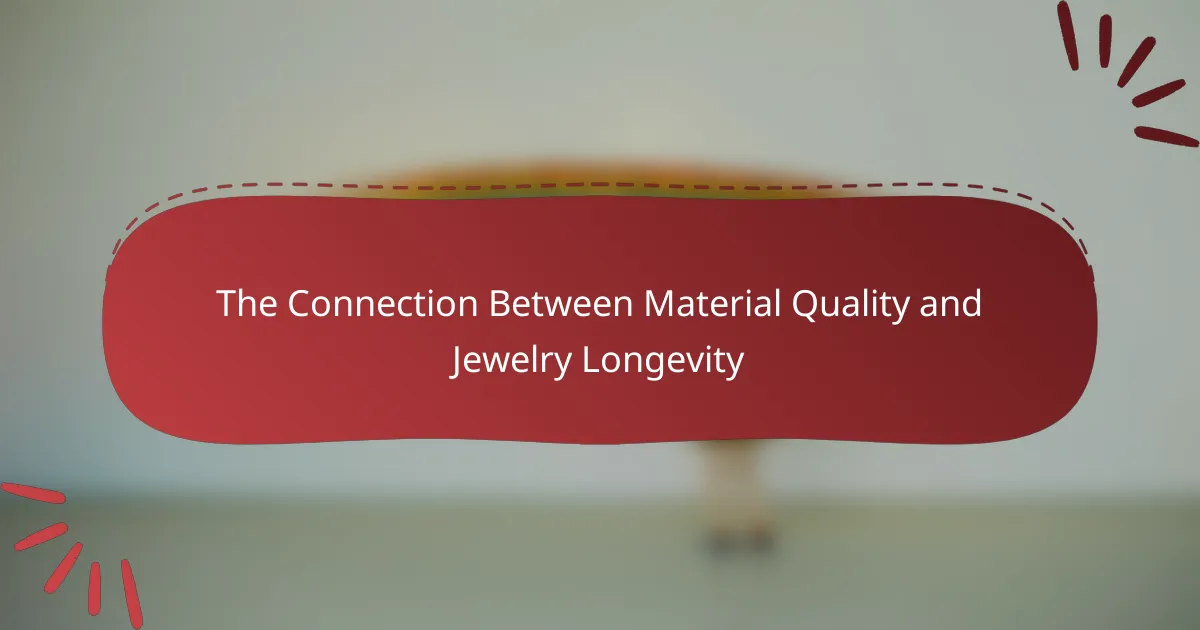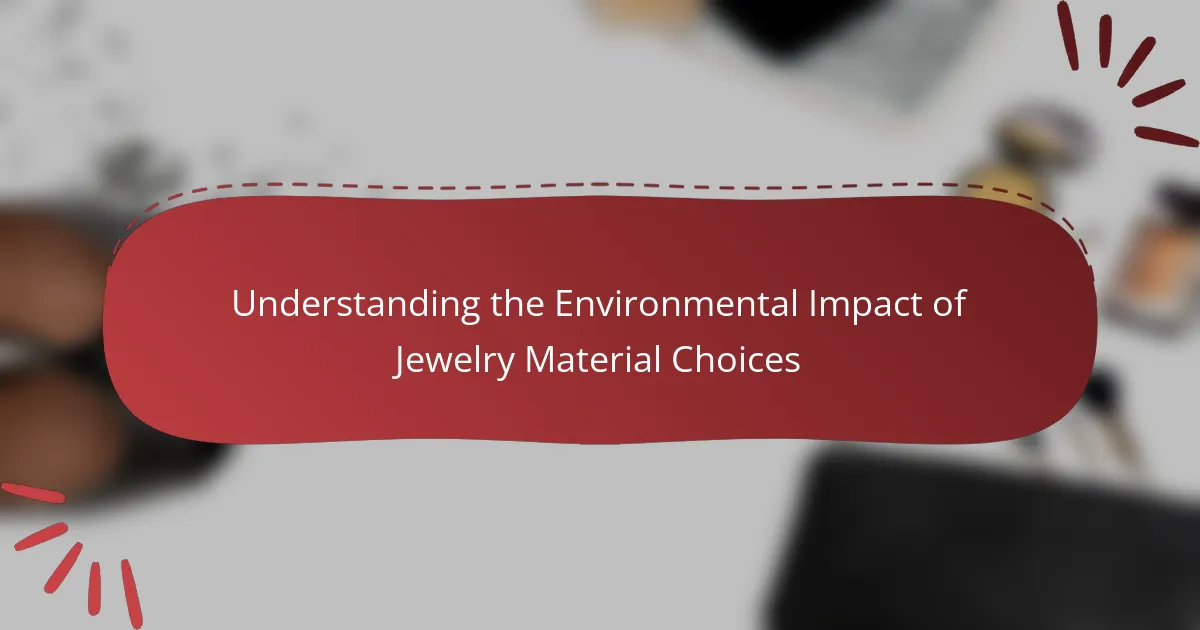The environmental impact of jewelry material choices is significant, influencing ecological health and sustainability. Mining for precious metals and gemstones, such as gold and silver, often results in habitat destruction, soil erosion, and water pollution, with gold mining generating substantial waste. Sustainable alternatives, including recycled metals and lab-created gemstones, present lower environmental footprints. Responsible sourcing […]

How Craftsmanship Affects the Value of Handmade Jewelry
Craftsmanship is a crucial factor influencing the value of handmade jewelry, as it directly affects both aesthetic appeal and durability. Skilled artisans employ superior techniques and materials, resulting in unique designs that often command higher prices in the market. The article examines how craftsmanship, along with design elements, market demand, and consumer preferences, shapes the […]

Exploring the Impact of Silver Alloy Composition on Jewelry Quality
Silver alloy composition plays a crucial role in determining the quality of jewelry. Higher silver content, such as in sterling silver, which consists of 92.5% silver and 7.5% other metals, enhances durability and luster. The choice of alloying metals affects properties such as tarnishing resistance and hypoallergenic qualities, with copper alloys being more prone to […]

The Relationship Between Jewelry Material and Skin Sensitivity
Jewelry material plays a significant role in determining skin sensitivity, as certain metals can trigger allergic reactions in individuals with sensitivities. Common allergens found in jewelry include nickel and cobalt, which are known to cause contact dermatitis, particularly in sensitive individuals. In contrast, precious metals like gold and platinum are less likely to provoke reactions, […]

The Connection Between Material Quality and Jewelry Longevity
Material quality is a critical factor influencing the longevity of jewelry. High-quality materials, such as gold, platinum, and gemstones with high clarity and hardness, offer durability, resistance to tarnish, and hypoallergenic properties, ensuring that pieces maintain their appearance over time. Jewelry made from premium materials typically lasts longer and resists wear and damage compared to […]

Understanding the Durability of Titanium in Jewelry Making
Titanium is a metal widely recognized for its exceptional strength, lightweight properties, and resistance to corrosion and tarnishing, making it a preferred material in jewelry making. Its hypoallergenic nature ensures compatibility with sensitive skin, while its durability allows jewelry to withstand wear and tear over time. The article explores the significance of titanium in jewelry […]

The Role of Certification in Ensuring Gemstone Authenticity in Jewelry
Certification is a vital process that ensures the authenticity of gemstones in jewelry. It involves the official verification of a gemstone’s quality and origin by professional gemologists, who assess attributes such as cut, color, clarity, and carat weight. This certification helps to prevent fraud and misrepresentation in the market, with reputable organizations like the Gemological […]

Comparing the Weight and Feel of Different Jewelry Metals
The article focuses on comparing the weight and feel of different jewelry metals, including gold, silver, platinum, palladium, titanium, and stainless steel. Each metal possesses unique attributes that influence its use in jewelry design and wearability. The discussion emphasizes how the density and thermal conductivity of these metals affect their tactile experience, impacting consumer perceptions […]

Evaluating the Scratch Resistance of Various Jewelry Finishes
Jewelry finishes are surface treatments applied to jewelry pieces that significantly influence their appearance, texture, and durability. This article evaluates the scratch resistance of various jewelry finishes, including polished, matte, brushed, and oxidized surfaces, highlighting how these finishes affect the visibility of scratches and overall longevity. It discusses methods for assessing scratch resistance, such as […]

The Importance of Gold Purity in Jewelry Quality
Gold purity, measured in karats, indicates the percentage of pure gold in an alloy, with 24 karats representing pure gold. The article explores the significance of gold purity in determining jewelry quality, emphasizing how higher karat values enhance aesthetic appeal but may compromise durability due to increased softness. It addresses common misconceptions about gold purity, […]
